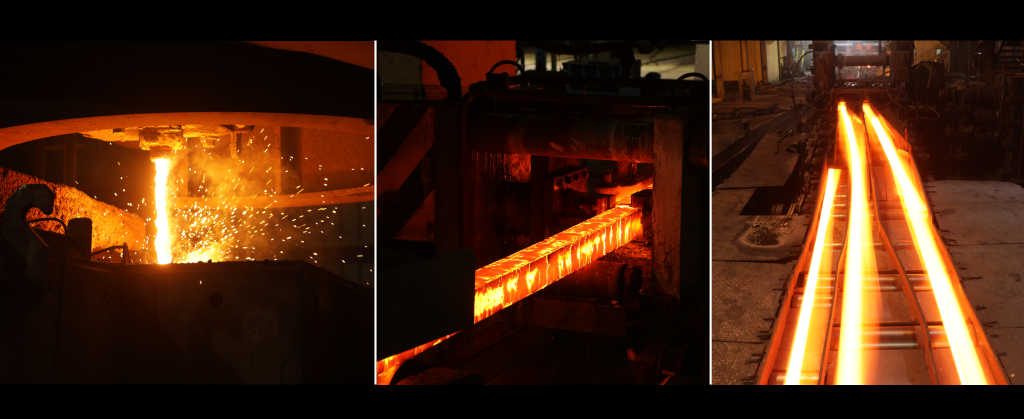Ever wondered how they make the super strong TMT steel? Here’s a peek at their manufacturing process.
TMT bars or Thermo Mechanically Treated bars have taken over the world of construction and rightly so! Not only are they an economically sensible option but they also have the advantage of offering unmatched durability as well as ductility compared to conventional steel bars.
Their strength and anti-corrosive properties can be chalked up to the special thermomechanical processing that produces steel which has a special Ferrite-Pearlite core encased in Tempered Martensite.
TMT bars go through below stages of manufacturing before they get delivered to you.
Stage 1 – Sourcing Materials and Processing
In this stage, huge volumes of high-grade recycled steel scrap are collected and sorted. The materials are then processed using either a BOS (Basic Oxygen Furnace) or an EAF (Electric Arc Furnace) or the more modern Induction Furnace method to adjust the composition of the steel.
Depending on the final desired composition of the steel, this process can add or remove certain chemicals from the metal.
The following processes can be used:
- Ladle Injection
- Ladle Furnace
- Stirring
- Degassing
- CAS-OB
Stage 2 – Making Steel Billets
This steel is finally cast into billets using the continuous casting process. In this process molten steel is poured into moulds which then turn the metal into long, rectangular forms called steel billets. These bullets are then turned into TMT bars.
Stage 3 – Making TMT reinforcement bar (rebars) from Steel Billets
This is final manufacturing process that produces the TMT steel rebars.
– In a reduction mill the heated billet goes through three stands – roughing, intermediate and finishing stands, where the rolling mill reduces the thickness and extends the overall length
-Once the hot rolled bar exits the final finishing rolling stand it is instantly passed through a water quenching system where water sprays causes the surface of the rebars to cool and harden quickly. While this rapid cooling makes the surface hard, it leaves the inner core hot and malleable.
– After the bars pass through the quenching system, the core remains hot and continues to pass this heat to the outer surface – the process is called self – tempering and turns the outer layer into Tempered Martensite.
-Now the bars are left of special cooling beds to cool down on their own. This makes the hot core cool down to room temperature slowly.
Once the rebars are tested, weighed and bundled they are shipped onwards to their final destination. From here on they go on to become the strong and invisible foundation of our lives for decades to come – helping construct dams, airports, flyovers, and our homes.
For the last 30 years, Moira Sariya, a leading manufacturer & supplier of TMT bars from Central India, has been a part of people’s lives. Manufactured in a high-tech plant using German CRS Technology, Moira Sariya is made in a fully-integrated plant that produces high strength, top-quality earthquake resistant and corrosion resistant TMT Bars giving long-lasting strength to the building structure.
Moira Sariya, Central India’s No. 1 TMT Brand.

